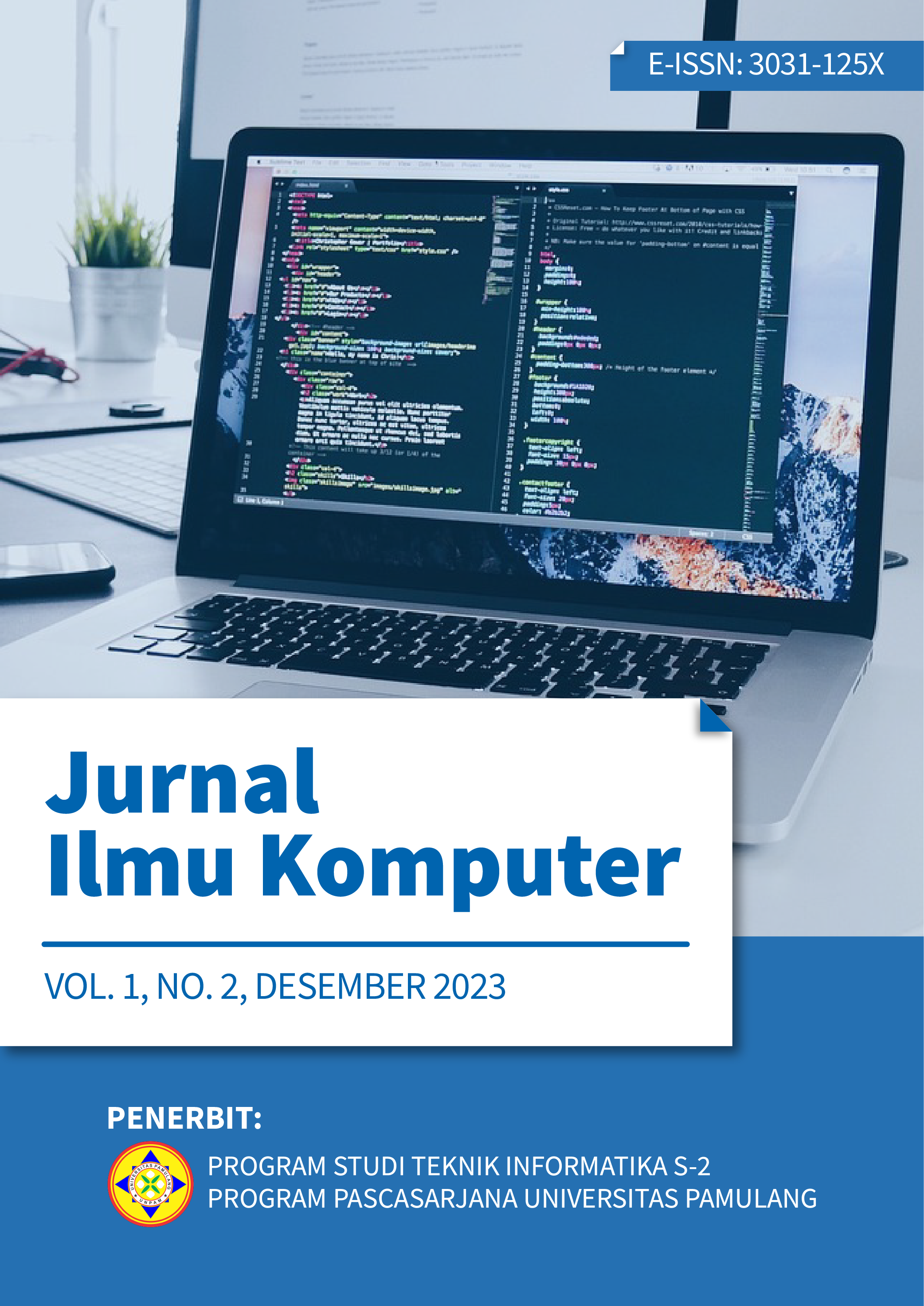Rancang Bangun Private Server Menggunakan Platform Proxmox dan Penerapan Zero Trust Model dengan Cloudflare
Keywords:
Design and Construct, Proxmox, Zero Trust, Cloudflare, WebsiteAbstract
This implementation emphasizes using Proxmox as the primary virtualization platform combined with the Zero Trust security concept, where each access request is rigorously assessed before being permitted. Integration with Cloudflare provides an additional layer of security through features such as web application firewall (WAF), DDoS protection, and strict access control. By adopting the Zero Trust model and leveraging Cloudflare services, the server infrastructure becomes more resilient against current cyber threats. The meticulous integration between Proxmox and Cloudflare offers a high level of security at every server access point, creating a reliable and safeguarded environment for IT services.References
[1] Danur Wijayanto, Arizona Firdonsyah, Faisal Dharma Adhinata , Akhmad Jayadi, “Rancang Bangung Private Server Menggunakan Platform Proxmox dengan Studi Kasus: PT.MKNT.
[2] S. A. Algarni, M. R. Ikbal, R. Alroobaea, A. S. Ghiduk, and F. Nadeem, “Performance Evaluation of Xen, KVM, and Proxmox Hypervisors:,†Int. J. Open Source Softw. Process., vol. 9, no. 2, pp. 39–54, Apr. 2018, doi: 10.4018/IJOSSP.2018040103.
[3] P. China Venkanna Varma, V. K. C. K., V. Valli Kumari, and S. Viswanadha Raju, “Analysis of a Network IO Bottleneck in Big Data Environments Based on Docker Containers,†Big Data Res., vol. 3, pp. 24–28, Apr. 2016, doi: 10.1016/j.bdr.2015.12.002.
[4] A. Kovari and P. Dukan, “KVM & OpenVZ virtualization based IaaS open source cloud virtualization platforms: OpenNode, Proxmox VE,†in 2012 IEEE 10th Jubilee International Symposium on Intelligent Systems and Informatics, Subotica, Serbia, Sep. 2012, pp. 335–339. doi: 10.1109/SISY.2012.6339540.
[5] X. Wan, X. Guan, T. Wang, G. Bai, and B.-Y. Choi, “Application deployment using Microservice and Docker containers: Framework and optimization,†J. Netw. Comput. Appl., vol. 119, pp. 97–109, Oct. 2018, doi: 10.1016/j.jnca.2018.07.003.
[6] R. Morabito, J. Kjallman, and M. Komu, “Hypervisors vs. Lightweight Virtualization: A Performance Comparison,†in 2015 IEEE International Conference on Cloud Engineering, Tempe, AZ, USA, Mar. 2015, pp. 386–393. doi: 10.1109/IC2E.2015.74.
[7] C. de Alfonso, A. Calatrava, and G. Moltó, “Container-based virtual elastic clusters,†J. Syst. Softw., vol. 127, pp. 1–11, May 2017, doi: 10.1016/j.jss.2017.01.007.
[8] M. Uehara, “Performance Evaluations of LXC Based Educational Cloud in Amazon EC2,†in 2016 30th International Conference on Advanced Information Networking and Applications Workshops (WAINA), Crans-Montana, Switzerland, Mar. 2016, pp. 638–643. doi: 10.1109/WAINA.2016.24.
[9] “What is a virtual machine (VM)?â€
https://www.redhat.com/en/topics/virtualization/what-is-a-virtual-machine (accessed Aug. 28, 2021).
[10] Sulastri Apridayanti, Isnawaty, and Rizal Adi Saputra, “Desain Dan Implementasi Virtualisasi Berbasis Docker Untuk Deployment Aplkasi Web,†Oct. 2018, doi: 10.5281/ZENODO.1407862.
[11] W. Li and A. Kanso, “Comparing Containers versus Virtual Machines for Achieving High Availability,†in 2015 IEEE International Conference on Cloud Engineering, Tempe, AZ, USA, Mar. 2015, pp. 353–358. doi: 10.1109/IC2E.2015.79.
[12] M. Riasetiawan, A. Ashari, and I. Endrayanto, “Distributed Replicated Block Device (DRDB) implementation on cluster storage data migration,†in 2015 International Conference on Data and Software Engineering (ICoDSE), Yogyakarta, Indonesia, Nov. 2015, pp. 93–97. doi: 10.1109/ICODSE.2015.7436978.
[13] A. Arfriandi, “Perancangan, Iimplementasi, dan Analisis Kinerja Virtualisasi Server Menggunakan PROXMOX, VMWARE ESX, dan OPENSTACK,†J. Teknol., vol. 5, no. 2, pp. 182–192, 2012.



